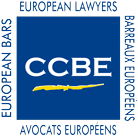Marketing has always been about one thing – visibility.
That remains as true today as ever. If customers don’t know that your product exists, your business likely won’t be around much longer. Attracting sales then depends on reaching your target audience and motivating prospects to take action. Understanding this basic principle can ultimately mean the difference between a successful business and one that’s barely staying afloat.
Here we look at the top ten marketing strategies that will completely transform your business. Implementing even one can have a huge impact on your bottom line.
1. Deliver a Positive Customer Experience
The most successful brands understand the value of repeat business.
Take Starbucks for example. A large part of the company’s success can be attributed to its customer centric model and creating an enjoyable experience with each cup served. Taking this approach has led it to becoming one of the world’s leading coffee chains.
Building brand loyalty is key to driving repeat sales. And that starts by finding ways to deliver a more positive experience with each customer.
So engage with your customer base and solicit feedback from them on what you can do better. Assess the competition and aim to provide more value. Even a small gesture like offering gift cards and personalised discounts can increase brand loyalty and get customers to return again in the future.
2. Make Valuable Resources Freely Available
Content marketing is defined as the following:
“Content marketing is a strategic marketing approach focused on creating and distributing valuable, relevant, and consistent content to attract and retain a clearly defined audience ? and, ultimately, to drive profitable customer action.”
Engaging content that is relevant and valuable is exactly the type that gets noticed. People share it with their followers on social media which in turn brings even more attention to it. Giving away free content is a proven strategy for lead generation. But to really stand out you need to take it a step further and offer unique resources.
One example comes from HubSpot:
The company offers a whole library of resources such as templates and even courses that are all freely available. Some resources you can create include:
- Templates
- Browser extensions
- Tools
- Software
- Mobile applications
Developing resources requires a higher investment of course but it will help you stand from the typical ebooks that companies offer for lead generation.
3. Multiply Your Content Marketing
Blogging is one of the most popular forms of content marketing and remains an effective way to reach prospects online. Data from HubSpot found that B2C companies that blog on a regular basis drive four times more leads than those that don’t.
The way it works is straightforward?You identify potential keywords to target and create engaging content around that topic. Once it starts ranking it becomes another gateway for prospects to find a brand.
But leaving a blog post as a single piece of content is a wasted opportunity. Consumers today use a multitude of channels to consume media. The best way to multiply your content marketing efforts and reach more prospects is to leverage multiple channels.
For example, content from a single blog post can be turned into:
- Videos to share on YouTube
- Presentations and infographics
- New podcast episodes
- Guest posts for backlinks
- Snippets for social media
All of which are excellent ways to reach your audience online and build strong links back to your site in the process.
4. Create Optimised Landing Pages
Landing pages are incredibly effective at driving conversions. According to data from HubSpot, companies that increased the number of landing pages on their sites from 10 to 15 saw a 55% increase in leads.
The chart shows a strong correlation between landing pages and leads. It’s not exactly hard to see why as landing pages represent more conversion opportunities. But despite these figures, a surprising 62% of companies that use landing pages have six or fewer of them according to data from MarketingSherpa.
Fortunately, you can use that to your advantage and gain a competitive advantage online. Here’s an excellent infographic from Kissmetrics on building pages that convert:
Remember to constantly test and optimise your landing pages to maximise your results.
5. Experiment With Live Streams
One format that has been gaining momentum over the last few years is live streaming.
Periscope was one of the earliest pioneers but others quickly followed suit. Facebook Live now lets users stream videos to their own followers which can easily be done right from a smartphone. But just how effective is it in terms of reaching an audience and driving traffic?
BuzzFeed streamed a live video of two employees wrapping a watermelon with rubberbands until it burst:
Naturally, the video quickly became viral and has been shared almost 18,000 times, generating well over 11 million views. Other companies have used live streaming with great results including BMW which used Periscope to unveil its new M2.
Here are some streaming ideas that you can get started with to market your brand:
- Offer in-depth tutorials
- Cover a special event
- Interview a key speaker
- Unveil a new product
- Host a Q&A session
- Give an office tour
Live streaming can be an invaluable part of your marketing when done right. Any brand can utilise platforms like Periscope, Facebook Live, and even YouTube to drive excellent results.
6. Ramp Up Your Email Marketing
There are a plethora of marketing channels available to advertisers. But one category continues to drive a much higher return than the rest?email. A study done by the Direct Marketing Association found that email generates a $39.40 ROI with every $1 spent.
Email marketing is not only an inexpensive way to reach customers, but it’s also a proven channel with 81% of retailers indicating that this medium drives customer acquisition and retention.
Start by building up your email list. One effective tactic you can employ is to offer an incentive (e.g. free guides) in exchange for email addresses. You may want to use an email platform such as MailChimp or GetResponse to manage your campaigns. Just remember not to spam your list or be overly promotional. Focus on providing value to your list and occasionally promote your products or services.
7. Engage in Outreach Marketing
Outreach marketing involves directly reaching out to key influencers or organisations. The idea is to build relationships and offer something in value that is mutually beneficial to both parties.
Contacts can be leveraged to promote content as part of an overall inbound campaign. Content you promote on other sites allows you to reach a new audience. Your site also earns a quality link in the process which has a positive impact on search engine rankings. In exchange, the other party receives relevant content they can add to their own website.
Here’s how you can get started with an outreach campaign:
- Use search queries to identify potential sites or view your competitor’s link profiles
- Engage with key industry influencers and bloggers via social media or email
- Propose potential content ideas for publication to their sites
- Create engaging content that is relevant to that audience
- Include a relevant link back to a landing page on your site
Outreach marketing can be implemented with an SEO strategy to grow your business and attract new sales. Be sure to keep a close eye on your analytics to measure how those efforts are contributing to your bottom line.
8. Drive More Sales With Conversion Rate Optimisation
Traffic is an important metric to measure the effectiveness of your campaigns are. But what ultimately matters are conversions to your site. Are visitors signing up for a free trial? Are they purchasing your products or filling out the lead form on your landing page?
One strategy that deserves more attention is conversion rate optimisation (CRO).
CRO is the process of optimising a website to generate more conversions which could be anything from new product purchases to free trial downloads and even newsletter signups.
A/B testing is perhaps the most widely used method.
The process involves sending traffic evenly to two different landing page. One has a slight change such as to the headline, call to action, body text or even layout. The variation with the higher conversion rate wins the test and the process starts over again.
Even a single percentage increase in conversions translates more to your bottom line?all with the same amount of traffic your pages are currently generating.
Data from Econsultancy shows that for every $92 spent acquiring customers, just $1 is spent actually converting them. Only a small percentage of companies are actually taking steps to increase their conversions, a fact you can take advantage of to gain an edge over the competition.
9. Engage More Visitors With Personalisation
In the early days of the Internet, all web pages were basically static entities. All visitors would see the same content regardless of their location. New tools now offer more advanced capabilities that let companies deliver personalised browsing experiences to their customers.
One example comes from Amazon which uses a recommendation engine to display related products based on previous transactions:
Other examples of online personalisation include:
- Displaying different landing pages based on a visitor’s geographic location
- Sending personalised emails with special discounts
- Allowing users to create their own profiles
- Curating content based on a user’s interests
- Using retargeting to bring back shoppers
A survey from AgilOne found that more than 70% of consumers want more personalised experience with brands they interact with. Here are some some experiences that shoppers appreciate:
There’s no shortage of online tools available to make personalisation efforts more rewarding for your customers and your bottom line.
10. Automate Tasks with Marketing Automation Tools
There are several key tasks that are crucial for organisations to meet their sales goals?sending out emails, posting on social media, creating landing pages, etc. But repeatedly doing such tasks can be incredibly time-consuming.
Marketing automation refers to using software to automate repetitive tasks. The goal isn’t to completely replace your marketing but rather to complement it and make doing certain tasks more efficient. In fact, 91% of successful marketers indicated that marketing automation was “very important” to the success of their marketing across different channels.
Companies like Marketo and HubSpot offer a range of automation tools that help businesses streamline their marketing efforts and boost productivity.
Conclusion
One of the biggest challenges that companies face is standing out in a competitive landscape. Consumers are constantly bombarded with an endless stream of messages all vying for their attention. Cutting through all the noise then starts with experimenting with different tactics and investing in more marketing channels. The strategies detailed above are all proven ways to transform your business and accelerate growth.















